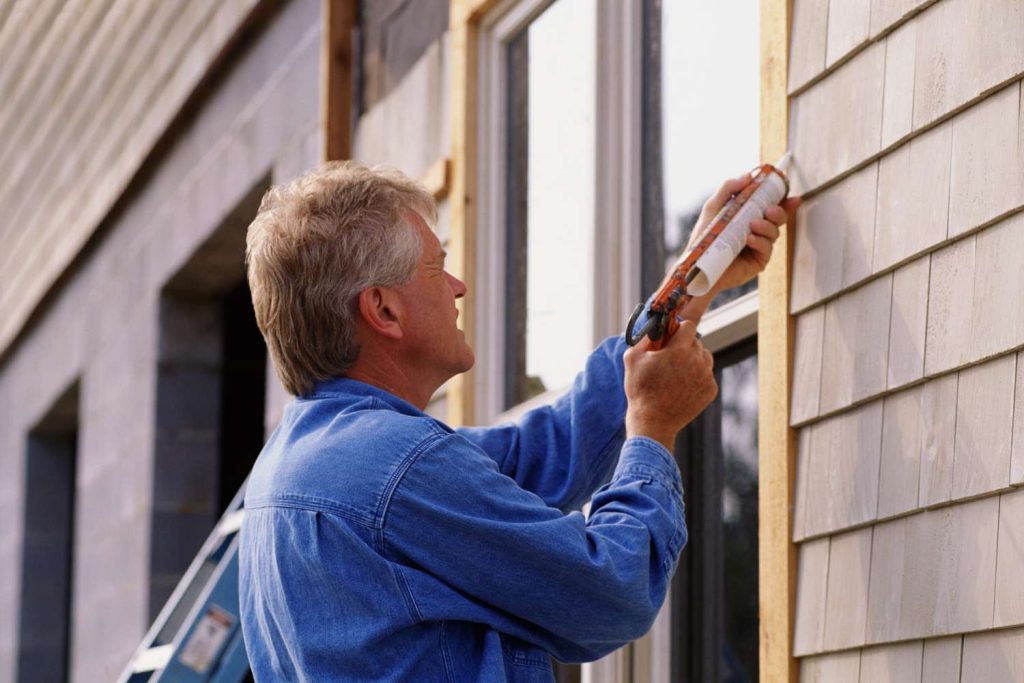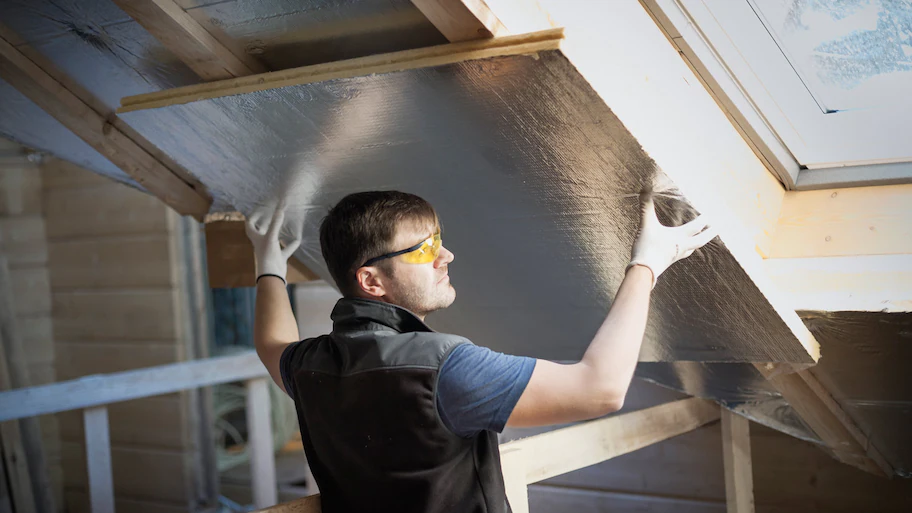Here at Elephant, we have many electric solutions to save you money and reduce your impact on the planet, all while making your home a safer, healthier place to live. But one of our favorite solutions doesn’t involve electrifying your home at all. Introducing, weatherization!

No matter how you heat your home (and we definitely recommend checking out Heat Pumps) you’ll want to consider weatherization. Weatherization is the process of modifying a building to reduce energy consumption and optimize energy efficiency. How is it done? Typically, it entails adding insulation and air sealing. Both measures enable you to heat and cool your home in the most efficient way possible.
Put simply, weatherization ensures the air inside your home stays in and the air outside your home stays out. This keeps it cool in the summer and warm in the winter, lowering your energy bills for maximum savings.
Let’s dig into these two sides of the weatherization coin:
Air Sealing

If you were trying to keep your home warm in the winter, you wouldn’t leave all the doors and windows open, would you? Of course not. Believe it or not, if you haven’t weatherized your home yet, your hot air is escaping and cold air is getting in. Every home is full of tiny cracks and holes, particularly around your doors and windows. These cracks are the perfect spots for air to leak in and out, making heating and cooling your home harder and more expensive. Air sealing your home stops the leaks at the source by sealing these spots with foam, caulk, or weatherstripping, and sometimes replacing outdated windows and doors altogether. This keeps the air in your home and your money in your pocket.
Insulation
Ever wondered how a thermos works? How does it keep your coffee so hot and your water so cold for so long? The answer is insulation. Insulation slows down the transfer of heat, keeping the heat in when you want it to be hot, and keeping the cold in when you want it to be cold. Lucky for us, insulation is not just for thermoses. If you want to keep your house cool in the summer and warm in the winter – efficiently – good insulation is crucial.

You can add insulation to your walls, attic, floors, even your foundation. Five of the most common types of insulation are fiberglass, cellulose, rock wool, reflective, and foam. Each is different, with its own pros and cons:
Fiberglass is made from tiny glass fibers that are spun together. It is a good insulator and is relatively inexpensive. However, it can be dusty and irritating to some people.
Cellulose is made from recycled paper, making it eco-friendly and less known for being dusty and irritating.
Rock wool is made from molten rock. It’s fire-resistant, mold-resistant, and dense.
Foam is made from a variety of materials, including polyurethane, polystyrene, and fiberglass. It’s water resistant and can be sprayed into place. This makes it good for small gaps and areas that might flood.
Reflective insulation is made from materials that reflect heat, like aluminum foil. It is not as effective, but it is easy to install.
The most important property to consider when it comes to insulation is R-value. R-value is a measure of how effective a certain type of insulation is. The higher an insulation’s R-value, the better it will be at maintaining your desired temperature. However, there are a number of other factors to consider too, such as price, health, climate, and local regulations. (Fortunately, we have experts on hand to guide you through the process.)
Heat Pumps
While there are many reasons to weatherize your home, it’s especially important if you own – or plan to own – a heat pump. That’s because unlike furnaces and boilers, which create their own heat by burning fossil fuels, heat pumps move heat around. That means that they function way better in a home that’s sealed and insulated.
And that makes sense, right? The more effective your house is at keeping heat in (and out) the less hard your heat pump has to work to hold your home at the desired temperature. This will save you money on your energy bill. And, since a weatherized home requires less heat production to start with, you can often purchase a less expensive, smaller heat pump, saving you money up front.
The Benefits
But even if you don’t have a heat pump, weatherization is still one of the best ways to invest in improving your home’s energy efficiency. It will make heating and cooling way more efficient, meaning less pollution and lower bills. How low? Here at Elephant, we love data, so let’s look at some stats:
On Average:
Post-weatherization heating and cooling usage decreased approximately 15%.
For every $1.00 invested in weatherization measures, homes saved between $0.90-$1.40 in energy bills. This is without a doubt the single best ROI energy upgrade you can invest in.
Participants in The U.S. Department of Energy’s Weatherization Assistance Program saw a $283 decrease in their annual energy bills.
Weatherization will also likely increase the value of your home. The exact amount depends on your home and where you live (for example, the real estate market in Boston is different than the one in Denver). But broadly, when it’s time to sell, a weatherized house is an attractive selling point for buyers. A report from Remodeling magazine found that the average attic air-seal and fiberglass insulation job costs $1,268, with an added value to the home at resale within a year of completion of $1,482.
Beyond the financial, weatherization can improve your quality of life. It ensures better air quality (especially on smoky days – looking at you Coloradans). It makes living in your home more comfortable, due to the ease of maintaining your thermostat set point temperature. And, you get to feel good about owning a healthy and climate friendly home. What’s not to love?
Time To Weatherize
Certain red flags serve as indicators that you need to weatherize:
- Your house feels especially drafty
- You can’t seem to get the temperature right
- You feel like your heating and cooling bills are out of control
- One or more rooms in your house are drastically different temperatures than other rooms
But often, there are no red flags at all. It’s possible that you’re not properly weatherized, and you don’t even know it. In any case, you may be throwing money out the window.
A good way to find out is to reach out to Elephant and set up an energy audit. This is like a check-up for buildings to understand how they use energy. It helps identify ways to save energy and reduce costs by examining energy use, evaluating equipment and systems, and suggesting improvements to make them more efficient.
One of the key elements of an energy audit is a blower door test, which involves mounting a powerful fan on an exterior door and creating a pressure difference to determine the amount of air leakage in your home. This test helps identify areas of air infiltration that we can address with weatherization measures.
If you’re in Colorado or Massachussts, we can conduct an energy audit at your home and gauge if you’re properly weatherized. And if the results indicate that you need to weatherize – we will work with you to implement the next steps.
That way, whether the weather is cold or whether the weather is warm you’ll be well…weatherized!
–
Want to explore weatherizing your home? Check out our free tool, Your Electrification Roadmap®. It allows you to share your priorities and preferences and then uses that information to build a personalized plan that’s clear, intuitive, and easy to follow.